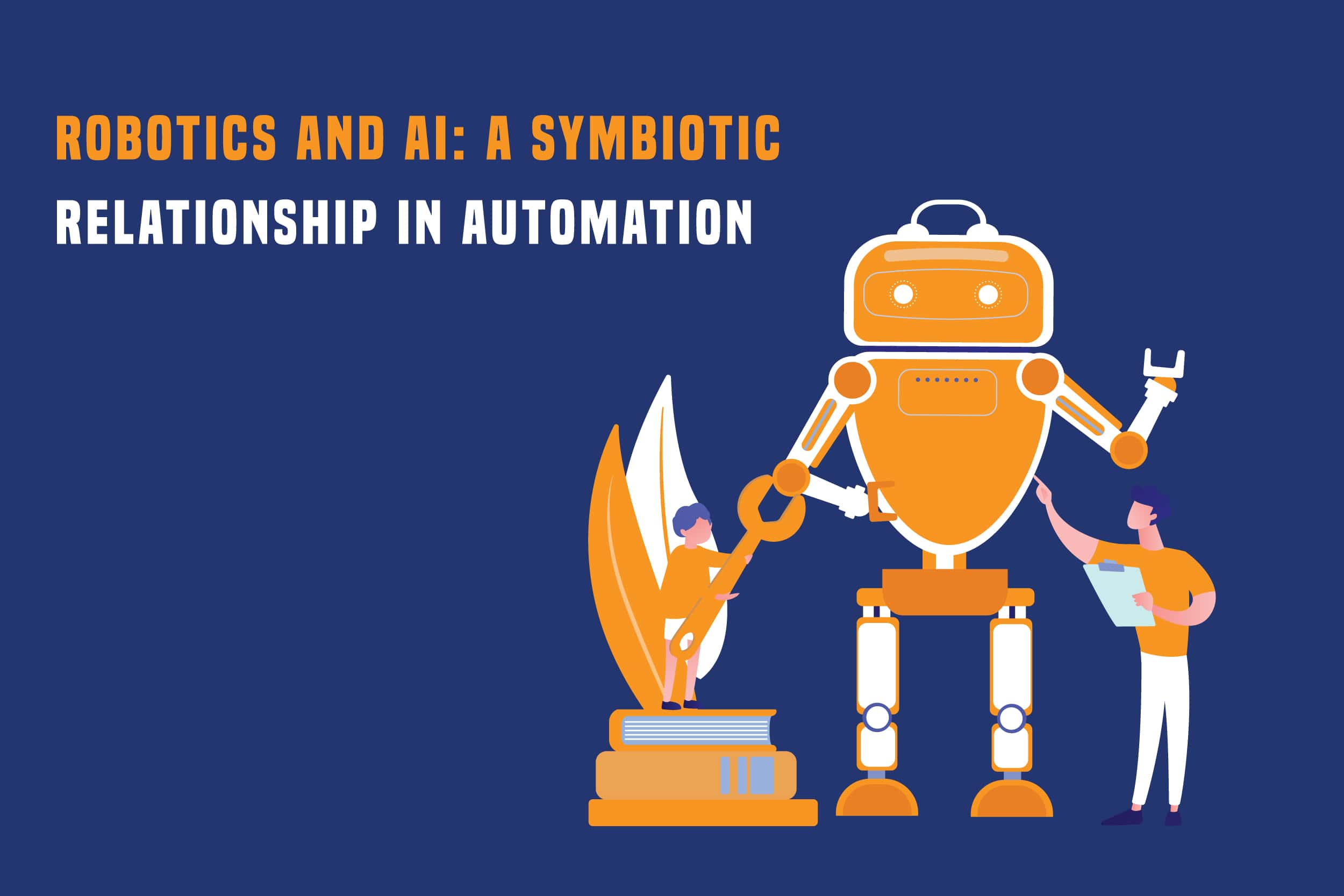
In the dynamic landscape of technological innovation, the intersection of Robotics and Artificial Intelligence (AI) has ushered in a transformative era of automation. This synergy between Robotics and AI creates a symbiotic relationship, unlocking unprecedented possibilities and redefining how we approach various industries and tasks.
One of the fundamental driving forces behind this collaboration is the quest for enhanced automation across diverse sectors. AI can rapidly process vast amounts of data, identify patterns, and learn from experience. When integrated into robotic systems, this cognitive prowess allows for a level of adaptability and intelligence that is revolutionizing industries such as manufacturing, healthcare, logistics, and beyond.
The transformative impact of this symbiotic relationship is not confined to a specific industry but extends to the fabric of our daily lives. So, smart homes equipped with robotic assistants driven by AI showcase the seamless integration of these technologies.
Moreover, the continuous development of this synergy underscores the importance of innovation in artificial intelligence. As AI algorithms become more sophisticated and capable of intricate decision-making, the potential applications of Robotics and AI continue to expand. The notion of self-learning systems, where robots can adapt and improve their performance over time, points towards a future where automation becomes both efficient and highly intelligent.
However, the rise of AI-powered robotics raises ethical considerations and challenges, particularly in areas like job displacement and the responsible use of autonomous systems. As these technologies advance, it becomes imperative for stakeholders, including IT consulting services, to guide the development and deployment of Robotics and AI with a commitment to ethical practices, transparency, and human welfare.
This fusion of physical and cognitive capabilities, driven by artificial intelligence. So, it enhances efficiency but also opens the door to a future where intelligent automation and integral part of our rapidly evolving technological landscape.
The union of Robotics and Artificial intelligence represents a symbiotic relationship beyond the sum of its parts. Traditionally associated with mechanical systems and physical automation. So, robotics has seamlessly integrated with AI to enhance cognitive capabilities. On the other hand, AI gains a tangible presence and the ability to interact with the physical world through the embodiment provided by robotics. This collaboration is at the heart of the automation revolution, influencing various sectors and aspects of our daily lives.
In Addition, one of the critical contributions of AI to robotics is in the realm of decision-making. Traditional robots were pre-programmed for specific tasks, lacking adaptability in dynamic environments. The infusion of AI allows robots to analyze data in real time, make decisions based on contextual information, and adapt to unforeseen circumstances. Machine learning algorithms enable robots to learn from experience, continuously improving their performance and efficiency.
In manufacturing, AI-driven robots can optimize production processes by adjusting to material variations, identifying defects, and predicting maintenance needs. So, this adaptability translates into increased productivity and cost-effectiveness.
Integrating AI in robotics has also facilitated safer and more efficient human-robot collaboration. AI algorithms enable robots to understand human gestures, speech, and emotions, making them more intuitive and user-friendly. This has paved the way for collaborative robots, or cobots, that can work alongside humans in shared workspaces without compromising safety.
So, AI-powered robotic assistants support medical professionals in surgeries and patient care in healthcare. These robots can analyze vast amounts of medical data, assist in diagnostics, and perform repetitive tasks, allowing healthcare professionals to focus on more complex aspects of patient care.
While AI empowers robots with cognitive abilities, robotics provides the physical embodiment necessary for AI to interact with the world. IT consulting services can design and develop custom solutions that align with the unique needs of a particular industry or organization. Robots bridge the digital and physical realms, allowing AI algorithms to manipulate objects. It navigates environments, and performs tasks that require a physical presence.
So, in the realm of robotics, AI gains a physical body, allowing it to interact with the physical world.
Robotic systems are equipped with various sensors, such as cameras, lidar, and tactile sensors, enabling them to perceive and understand their surroundings.
The physical interaction facilitated by robotics offers AI the opportunity to learn from the consequences of its actions in the real world.
In scenarios where robots collaborate with humans, such as in industrial settings. So, the ability to learn from physical interactions becomes paramount.
Integrating robotics with AI empowers machines to make real-time decisions in dynamic and unpredictable environments.
Despite the immense potential of the symbiotic relationship between Robotics and AI, it has its challenges. So, ethical considerations surrounding job displacement, data privacy, and the potential misuse of AI-powered robotics need careful examination. As these technologies become more pervasive, addressing the potential risks and societal implications is essential. This section explores some of the challenges and ethical considerations associated with the symbiotic relationship between Robotics and AI.
As an IT consulting services company, it is crucial to address these concerns and contribute to the responsible and ethical use of automation technologies. Robots equipped with AI can perform tasks more efficiently and tirelessly than humans in specific domains, leading to workforce disruptions.
The seamless integration of AI and Robotics often involves collecting and processing vast amounts of data. It helps for ranging from sensor inputs to user interactions. So, ensuring the privacy and security of this data is a paramount concern.
In addition, AI systems, including those embedded in robotics, learn from the organization’s data. If the training data used to develop these systems contains biases, the AI algorithms can perpetuate and amplify those biases.
So, determining accountability and liability in AI-related incidents or accidents poses a significant challenge. As robots become more autonomous and capable of making decisions, questions arise about who is responsible when things go wrong.
IT consulting services can play a role in addressing these concerns by promoting responsible and ethical practices. So, it is about the potential for loss of human control and the escalation of conflicts.
As Robotics and AI continue to evolve, their impact on various industries is becoming more pronounced. From agriculture to logistics, healthcare to construction, the synergy between these technologies unlocks new possibilities and reshapes the future of work.
Additionally, in agriculture, AI-powered robots with advanced sensors and machine learning algorithms. It can optimize crop yield through precision farming of the organization. In logistics, robots stream warehouse operations, increasing inventory management and order fulfillment efficiency. So, the applications are diverse, and the innovation potential seems boundless.
The symbiotic relationship between Robotics and AI is a driving force behind the ongoing automation revolution. An IT consulting services company can contribute to transformative changes across industries and help clients navigate the evolving technological landscape. As we navigate this technological frontier, it is crucial to approach the integration of Robotics and AI with a thoughtful and ethical mindset, ensuring that the benefits of automation are shared equitably and responsibly. For more information, visit our website.

In today’s competitive business environment, organizations must be equipped with efficient, reliable, and scalable systems to manage their operations. Enterprise Resource Planning (ERP) solutions provide companies with the tools to streamline their processes, integrate various departments, and enable data-driven decision-making.
Among the vast array of ERP solutions, SAP is one of the most well-known, but it’s not the only option. Businesses must consider whether SAP or another ERP solution is the right fit based on their unique needs.
Read More
Enterprise Resource Planning (ERP) systems have become the backbone of modern business operations. Whether it’s handling financials, human resources, supply chains, or manufacturing processes, ERP solutions streamline and automate vital business functions, fostering efficiency and growth. SAP, one of the leading ERP platforms, is often the go-to choice for organizations due to its robust and customizable features. However, ERP implementation—whether SAP or another system—is not without challenges. This is where IT consulting services play a pivotal role.
The complexities of ERP implementations require specialized expertise, and IT consulting services provide the technical know-how, strategic planning, and ongoing support that are critical to successful deployment and long-term functionality.
Read More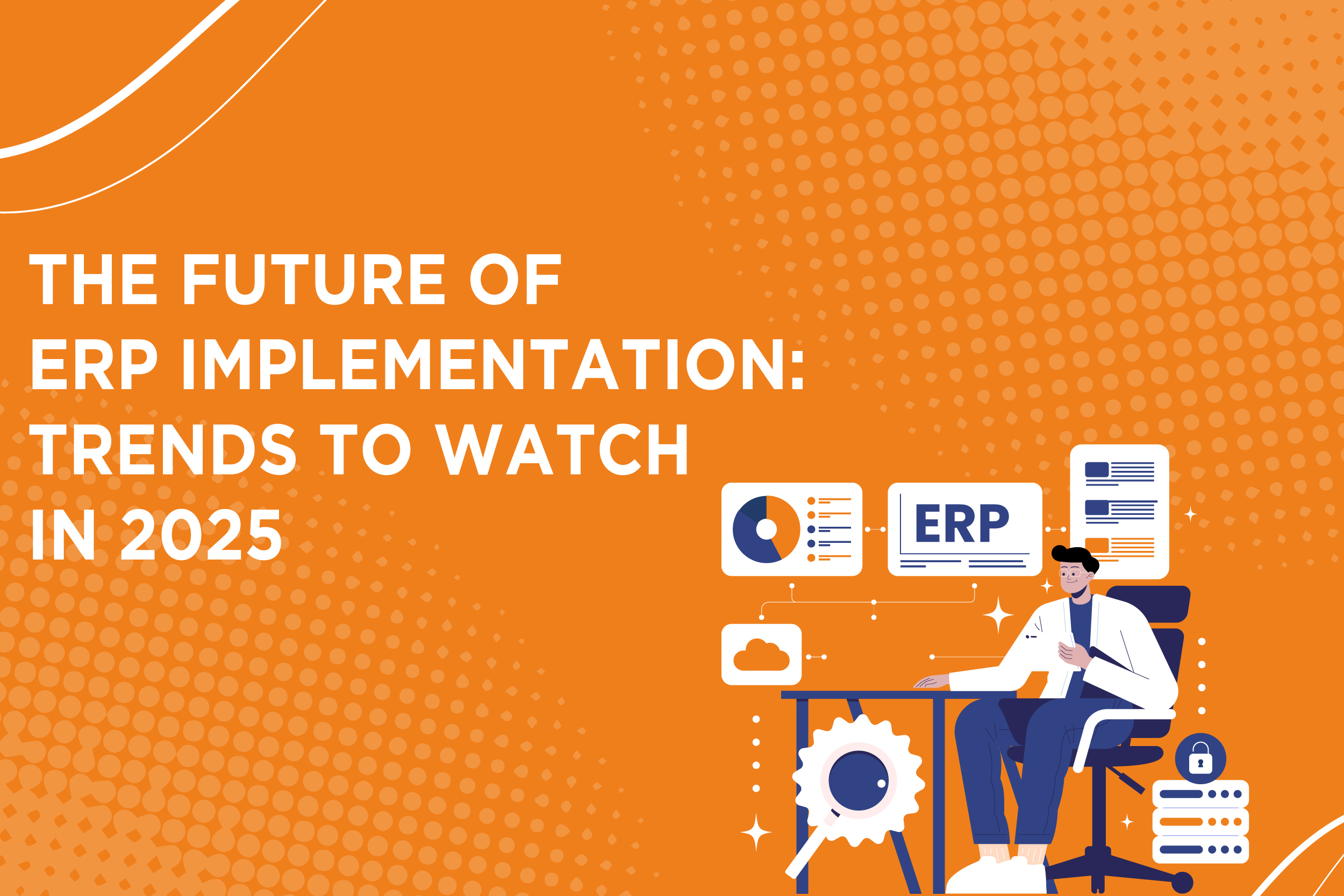
In the rapidly evolving business landscape, enterprise resource planning (ERP) systems are essential for companies looking to streamline operations, improve data accuracy, and enhance decision-making processes. As we look toward 2025, the future of ERP implementation is promising, with significant trends emerging that are reshaping how organizations deploy and manage their ERP systems. From advancements in SAP implementation to innovations in IT consulting services, businesses must keep a keen eye on these trends to remain competitive.
Read More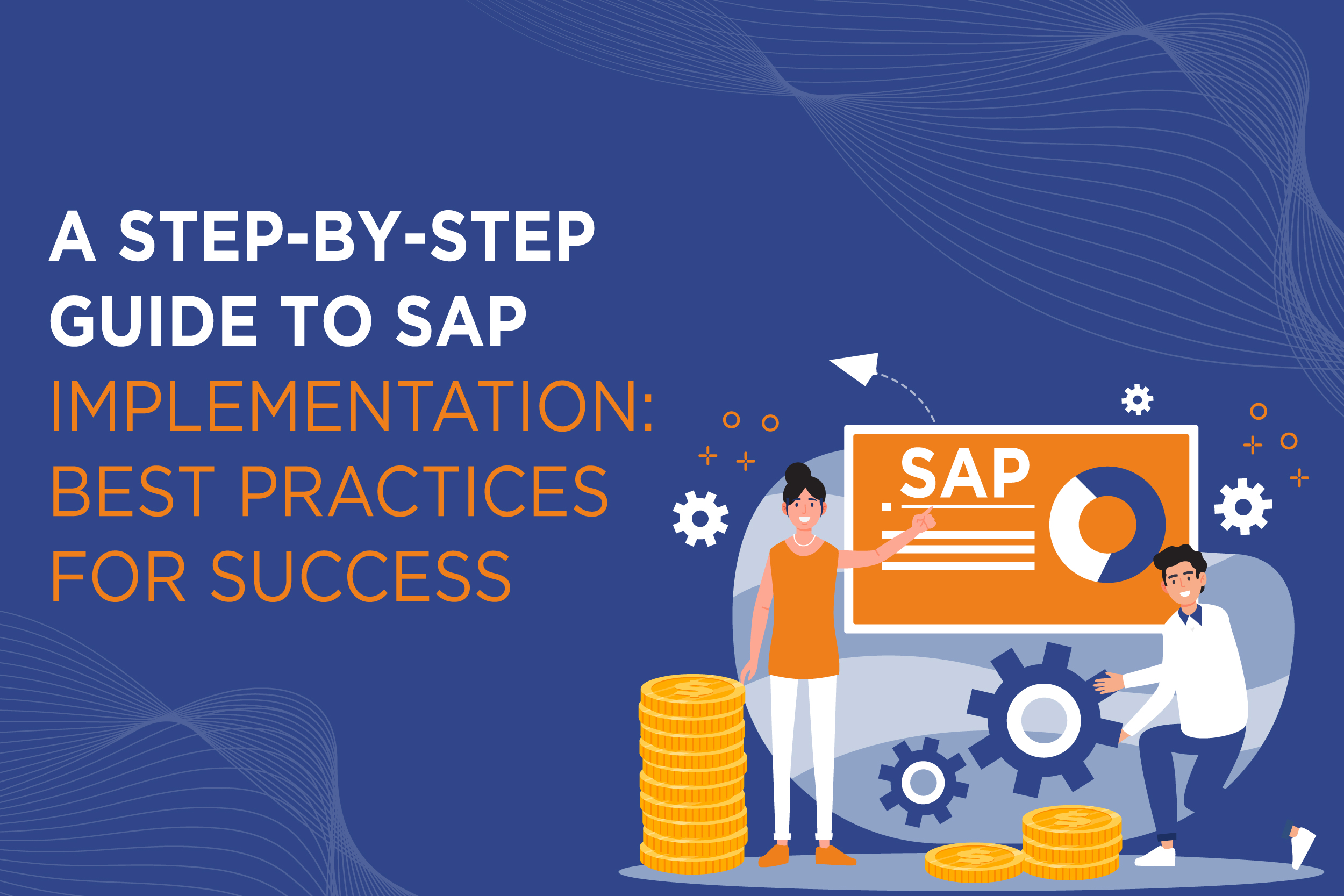
Implementing an SAP and ERP system is a major milestone for many organizations seeking to streamline operations, enhance efficiency, and support future growth.
However, SAP implementation is a complex and resource-intensive process that requires meticulous planning and execution. Done right, it can transform your business. Done wrong, it can lead to significant disruptions.
Read More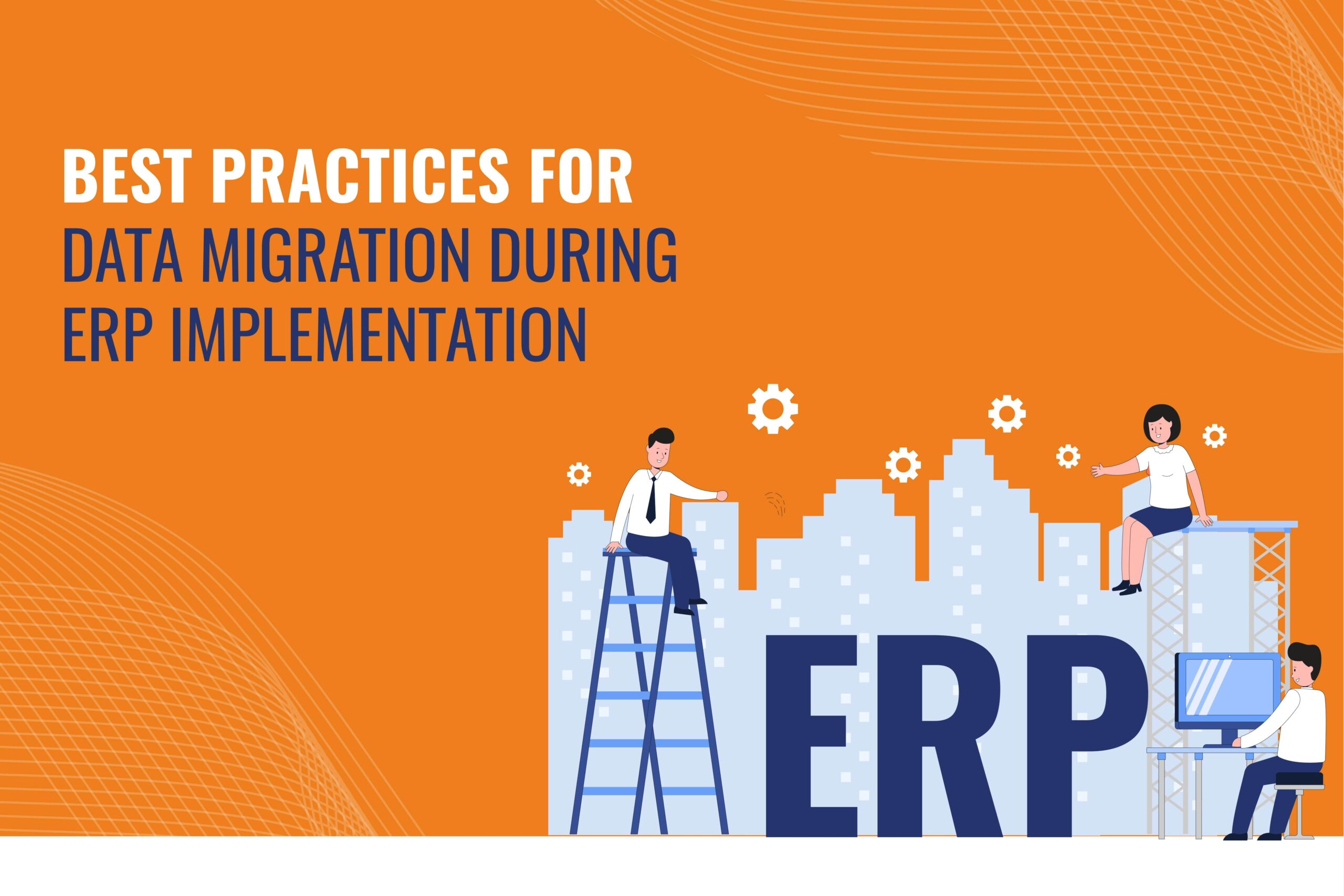
Implementing an ERP system is a transformative step for organizations, offering streamlined processes and strategic insights. However, the success of an ERP implementation largely depends on effective data migration, which involves transferring data from legacy systems to the new platform. This process is complex and requires meticulous planning to avoid disruptions to business operations.
Data migration involves activities like data extraction, transformation, cleansing, and loading (ETL). The goal is to ensure data from various sources is accurately transferred and integrated into the ERP system, maintaining data integrity and accessibility.
Organizations face several challenges during data migration. These include ensuring data quality, managing compatibility issues between different systems, handling the volume and complexity of data, minimizing downtime, and ensuring compliance with security regulations. Addressing these challenges is crucial for a successful ERP implementation.
To overcome these challenges, organizations should follow best practices. These include establishing clear objectives and scope for the migration, conducting comprehensive data assessments, and developing a robust migration strategy. Investing in data cleansing and transformation, engaging stakeholders, and performing rigorous testing and validation are also key. Additionally, implementing data governance and security measures, and planning for contingencies, are essential to mitigate risks.
Following these best practices ensures smooth data migration, enabling organizations to fully leverage their ERP systems’ potential. This paves the way for enhanced efficiency, agility, and competitiveness in the digital landscape, laying a solid foundation for future growth and digital transformation.
Read More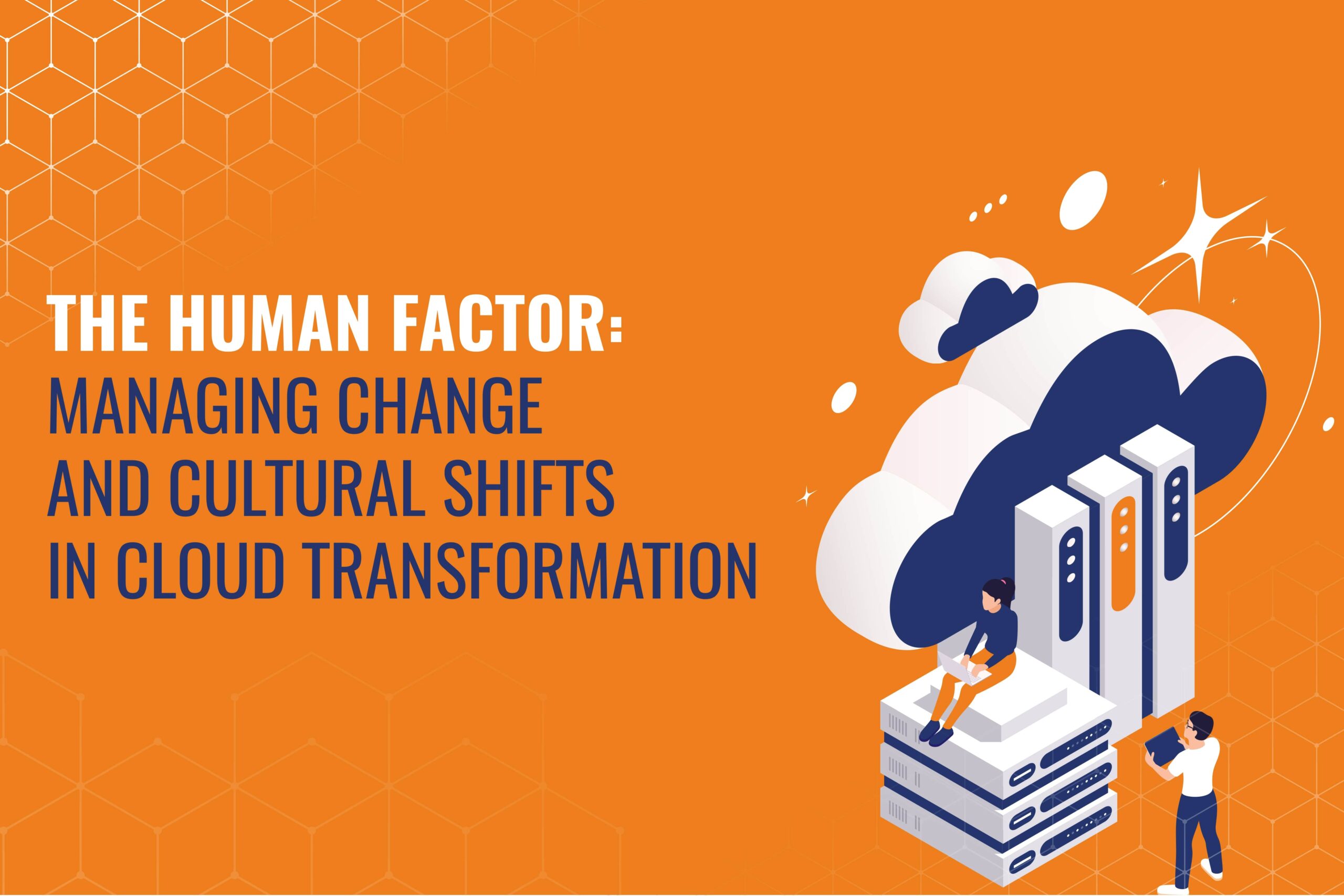
In the landscape of technological evolution, cloud transformation stands as a cornerstone for modern businesses seeking enhanced scalability, agility, and innovation. However, a critical yet often overlooked aspect lies beneath the surface of technical intricacies: the human factor. Managing change and cultural shifts is paramount for successfully adopting cloud technology.
At its core, cloud transformation extends beyond mere technological migration. So, it represents a fundamental shift in organizational culture and mindset. Embracing this shift requires a holistic approach that addresses technical challenges and the human elements within the organization.
Change management is a pivotal component of cloud transformation, facilitating the transition from traditional to cloud-native paradigms. Effective change management strategies involve clear communication, stakeholder engagement, and proactive efforts to address resistance to change.
Cultural shifts are intrinsic to cloud transformation as organizations strive to align their values and behaviors with core cloud principles such as agility, innovation, and customer-centricity. So, this involves breaking down silos, promoting cross-functional collaboration, and empowering employees to embrace new ways of working. Leaders are crucial in driving cultural change, championing cloud vision, and fostering a supportive environment encouraging experimentation and risk-taking.
So, workforce readiness emerges as a critical consideration in cloud transformation, requiring organizations to assess and enhance their employees’ skills and capabilities. Upskilling and reskilling initiatives can help bridge the gap between existing skill sets and the evolving demands of the cloud-native ecosystem. Additionally, providing adequate training, support, and incentives can empower employees to embrace the transformative potential of cloud technology.
Ultimately, successful cloud transformation hinges on effectively managing change and cultural shifts. By recognizing the human dimension of cloud adoption and investing in strategies that promote collaboration, innovation, and employee empowerment, organizations can unlock the full potential of the cloud and drive sustainable growth in the digital era.
Read More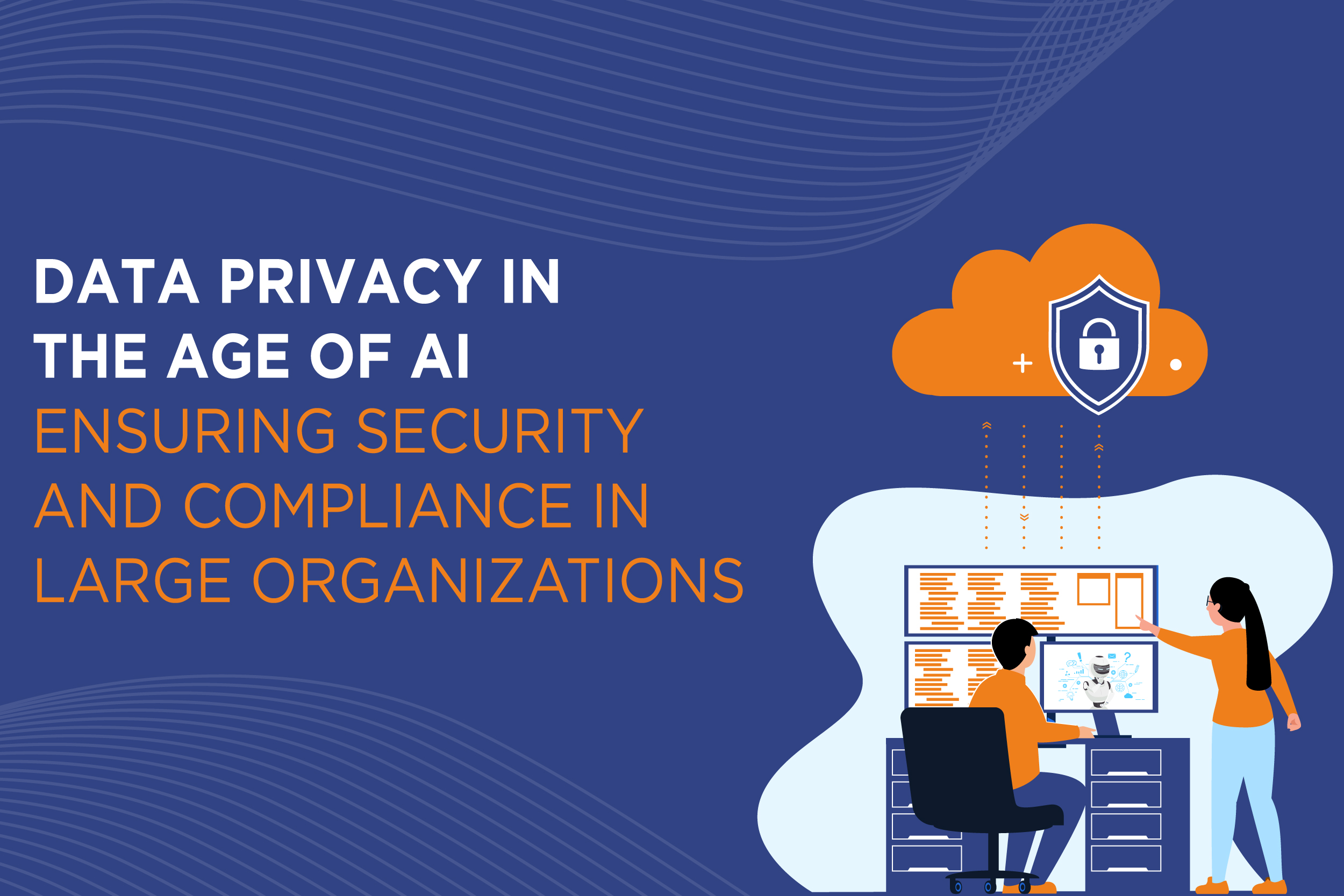
In the era of artificial intelligence (AI), ensuring data privacy is paramount for large organizations to maintain security and compliance with regulations. This challenge is accentuated by the vast amounts of data collected and processed by AI systems, heightening concerns about potential breaches and misuse.
Organizations must implement robust data privacy measures across the entire data lifecycle to address these concerns, from collection to disposal. This begins with implementing stringent access controls to limit who can interact with sensitive data and encryption to protect data both at rest and in transit. Additionally, this technique can remove personally identifiable information from datasets, reducing the risk of accidental exposure.
Furthermore, organizations must establish clear policies and procedures for data governance and compliance. This includes conducting regular audits to ensure adherence to data privacy regulations such as the General Data Protection Regulation (GDPR) and the California Consumer Privacy Act (CCPA). Moreover, employees should receive comprehensive training on data privacy best practices to foster a culture of compliance throughout the organization.
In parallel, organizations should invest in AI-specific security measures to safeguard AI models and algorithms. Additionally, deploying robust intrusion detection systems can help identify and mitigate potential threats to AI systems in real-time.
Collaboration with external stakeholders is also crucial for ensuring data privacy in the age of AI. This includes partnering with third-party vendors who adhere to stringent data privacy standards and regularly assessing compliance with these standards. Furthermore, engaging with regulatory bodies and industry groups can provide valuable insights into evolving data privacy requirements and best practices.
Despite these measures, the evolving nature of AI and data privacy regulations necessitates ongoing vigilance and adaptation. Organizations must continuously monitor Artificial intelligence and data privacy developments, updating their policies and technologies accordingly. By prioritizing data privacy and security, organizations can mitigate risks, build trust with stakeholders, and ensure long-term success in AI.
Read More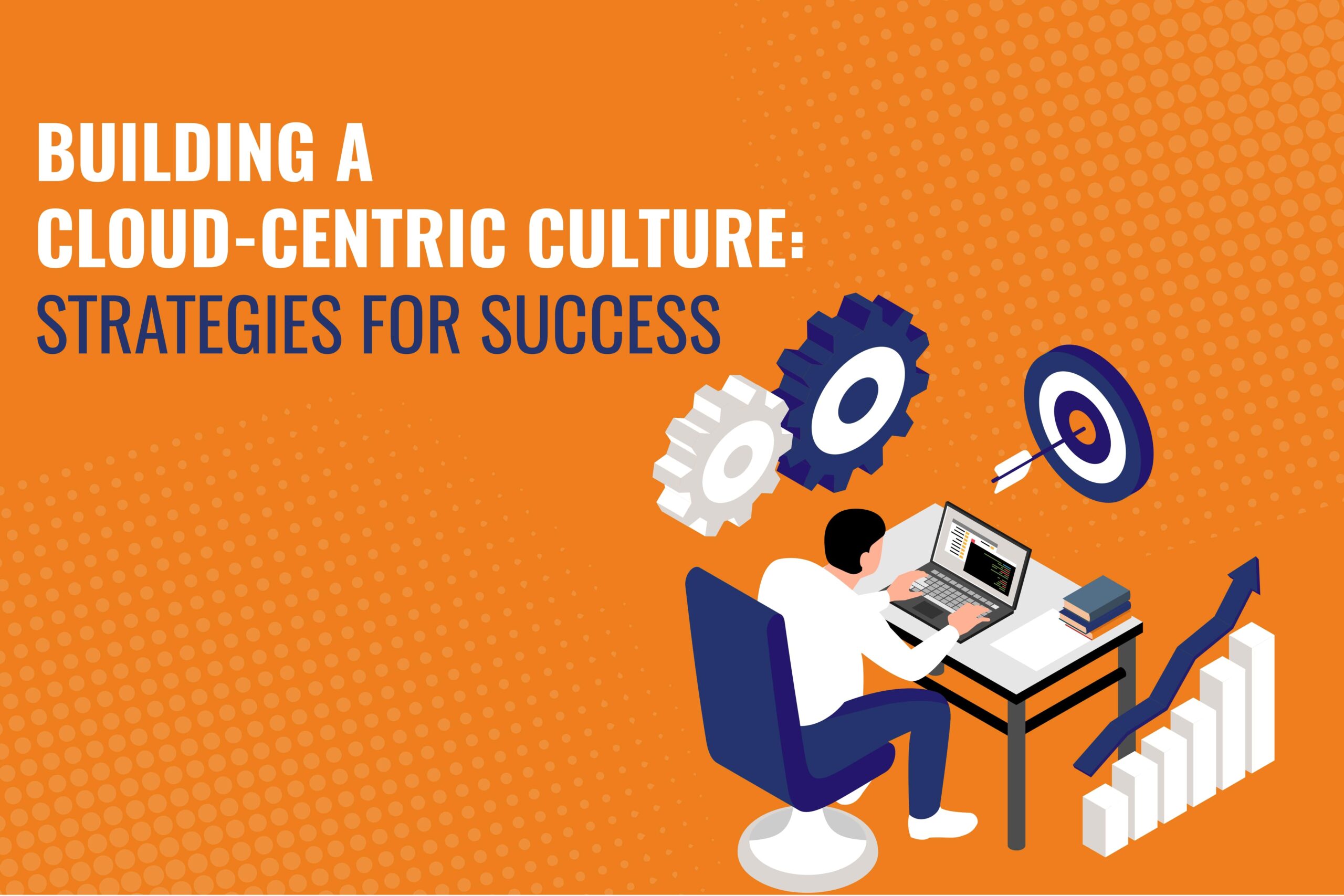
In today’s rapidly evolving business landscape, cloud transformation has become synonymous with innovation, agility, and competitive advantage. As organizations increasingly embrace cloud computing to drive digital transformation, building a cloud-centric culture has become crucial and imperative for success.
A cloud-centric culture is characterized by a mindset that embraces the transformative power of cloud technology and prioritizes. Its integration into every aspect of the organization’s operations, processes, and decision-making. It goes beyond merely adopting cloud solutions; it fosters a culture of collaboration, innovation, and continuous improvement.
One key strategy for building a cloud-centric culture is to promote awareness and understanding of the benefits of cloud transformation across the organization. This involves educating employees about cloud technology’s capabilities, its impact on business operations, and the opportunities it presents for driving innovation and growth.
Another critical aspect of cultivating a cloud-centric culture is to lead by example. Executive leadership must demonstrate a commitment to cloud transformation by championing its adoption. It invests in the necessary resources and infrastructure, and actively participates in cloud initiatives. Moreover, organizations must not only empower employees to become cloud advocates but also, consequently, champions within their respective teams and departments. This involves providing training and development opportunities to build cloud expertise and fostering a culture of experimentation and risk-taking.
Effective communication is also essential for nurturing a cloud-centric culture. Organizations should regularly communicate their cloud strategy, goals, and progress to employees, ensuring transparency and alignment. Organizations can cultivate a sense of ownership and commitment to the cloud transformation journey by keeping employees informed and engaged.
Furthermore, fostering collaboration and cross-functional teamwork is vital for building a cloud-centric culture. Cloud transformation often requires breaking down silos and facilitating cooperation between different departments and teams. Organizations can harness collective intelligence and creativity by encouraging collaboration and knowledge sharing.
In conclusion, building a cloud-centric culture is not only about adopting new technology but also about, therefore, transforming how people think, work, and collaborate by actively promoting awareness. It is leading by example, empowering employees, facilitating communication, and fostering collaboration, organizations
Read More
In today’s fast-paced digital landscape, agile transformation is necessary for businesses striving to stay competitive and responsive to evolving market demands. Agile methodologies enable organizations to adapt quickly to changing requirements, deliver products faster, and foster innovation. However, as businesses embrace agile practices, they must prioritize cybersecurity to safeguard their assets and maintain operational resilience.
For IT solution consultants, integrating security into agile processes is paramount. This involves seamlessly embedding security considerations into every stage of the software development lifecycle, from planning and design to implementation and deployment. By incorporating security practices into agile methodologies, organizations can mitigate risks and address vulnerabilities proactively rather than as an afterthought.
One key strategy for integrating security into agile processes is by leveraging automation. By automating security testing in CI/CD pipelines, teams can quickly detect and fix vulnerabilities throughout the development lifecycle. This accelerates delivery cycles and consistently applies security measures, reducing the likelihood of security breaches and downtime.
Furthermore, IT solution consultants are crucial in promoting a culture of security awareness and collaboration within agile teams. This collaborative approach fosters a shared understanding of security risks and responsibilities among team members, empowering them to take ownership of security outcomes.
An IT solution consultant offers expertise in implementing security best practices, including secure coding, threat modeling, and vulnerability management. By equipping agile teams with the knowledge and tools to prioritize security, consultants enable organizations to build resilient and trustworthy software products.
Ultimately, agile transformation and cybersecurity are intertwined aspects of modern business operations. As businesses embrace digital transformation, IT consultants will crucially integrate security into agile methods, ensuring successful and secure IT initiatives.
Read More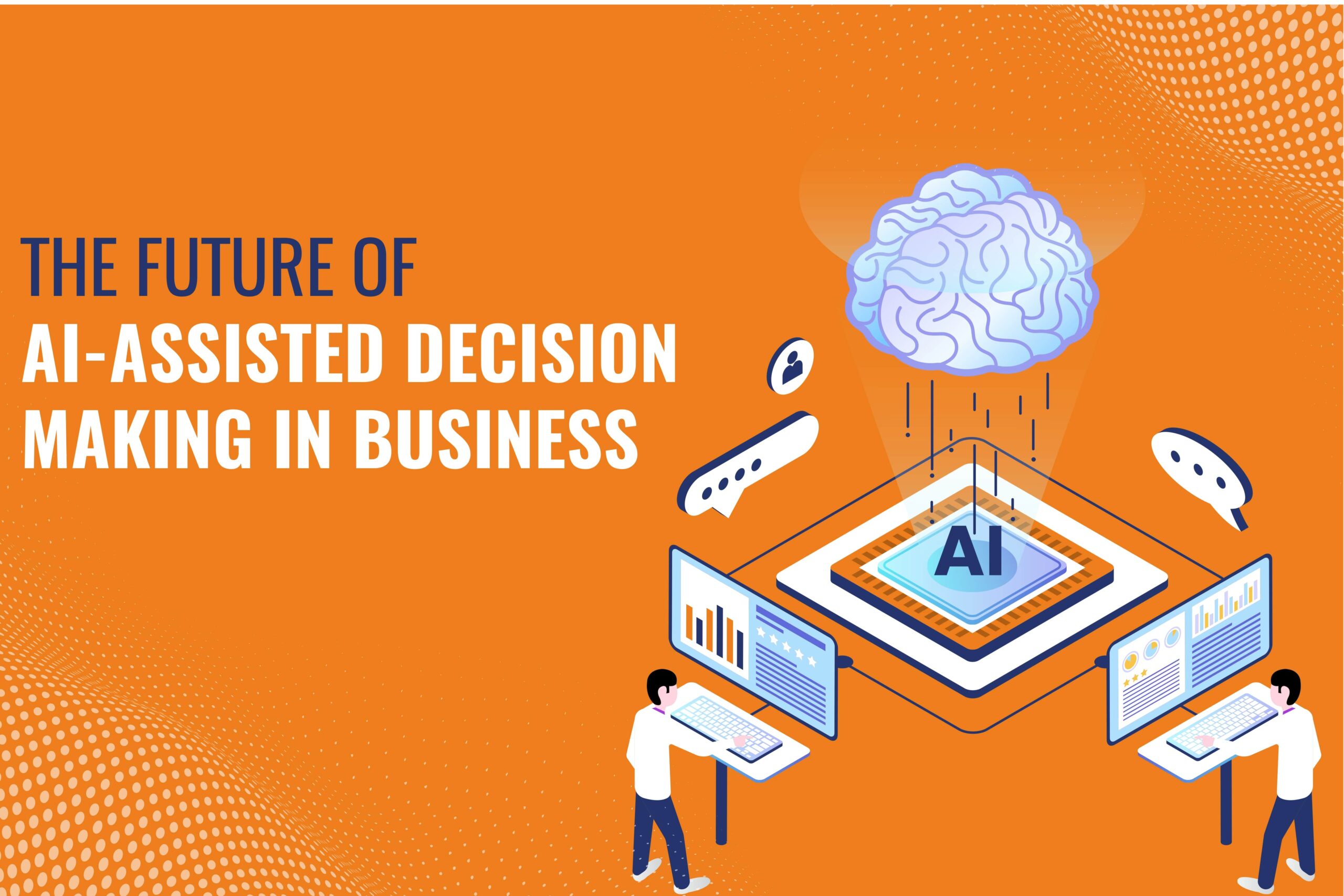
In the rapidly evolving landscape of modern business, integrating artificial intelligence (AI) is increasingly becoming a cornerstone of decision-making processes. This transformation promises to redefine how businesses operate, strategize, and compete in the global marketplace. As we peer into the future of AI-assisted decision-making, several key trends emerge, shaping how organizations harness AI’s power to drive success.
AI is set to transform decision-making by enhancing human intelligence with its unmatched capacity to swiftly process extensive data. AI systems use advanced algorithms and machine learning to analyze complex data, uncover patterns, and reveal hidden insights.
Furthermore, AI-powered decision-making holds the potential to optimize resource allocation and mitigate risks in an increasingly volatile and uncertain business environment. By leveraging predictive analytics and scenario modeling, AI systems can anticipate market trends, identify potential threats, and recommend proactive strategies to mitigate risks and capitalize on opportunities.
Moreover, AI-driven decision-making democratizes access to insights and expertise, empowering businesses of all sizes to compete on a level playing field. With the proliferation of AI tools and platforms, even small and medium-sized enterprises. So, it can harness the power of AI to streamline operations, optimize processes, and drive innovation.
The future of AI in business will see continuous advancements, integrating AI into every aspect of organizational operations. AI is set to impact all business areas, from customer service to financial forecasting, boosting efficiency, agility, and innovation.
So, the future of AI-assisted decision-making in business is bright and promising. It offers unprecedented opportunities for organizations to drive growth, innovation, and success. By harnessing the power of Artificial Intelligence to augment human intelligence, optimize resource allocation, and democratize access to insights. In addition, it embraces ongoing advancements in AI technology, and businesses can position themselves for long-term success.
Read More
Leave a Reply